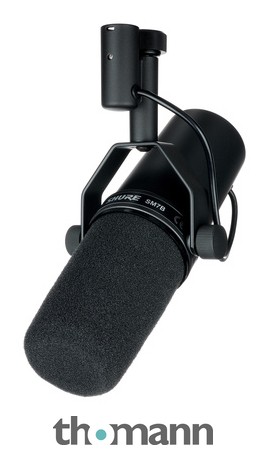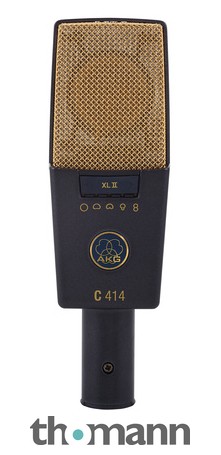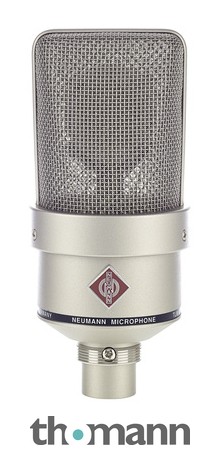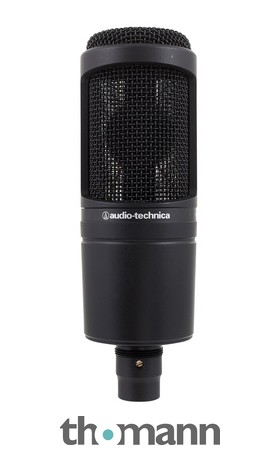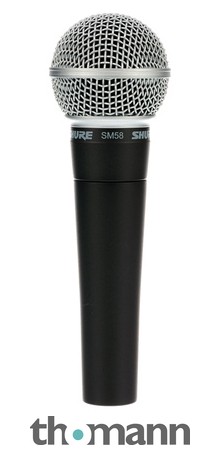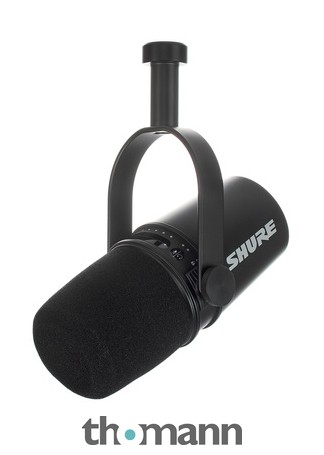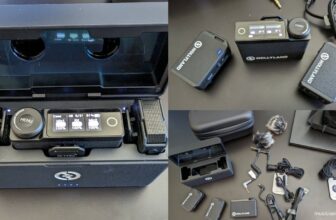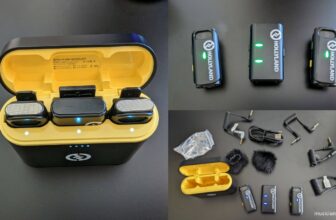The 7 Best Vocal Mics of (2024) for Stage and Studio
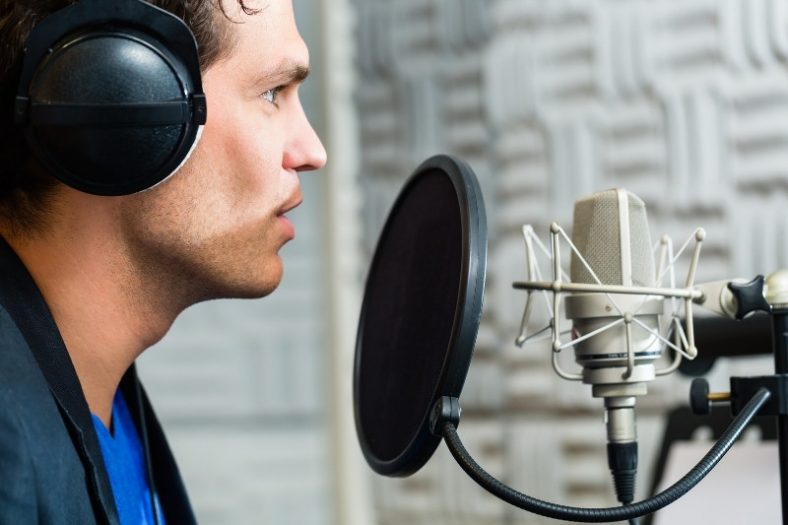
Vocal microphones are essential whether for recording or performing live. This list includes excellent choices for all styles and budgets.
My top pick is the Shure SM7B, it’s one of the best and most preferred high-end dynamic vocal microphones on the market with its great sound quality, notoriously low noise, and sonic versatility.
If you want a more budget-friendly option, I suggest you check out the Audio-Technica AT2020, the cardioid polar pattern condenser mic with a great value-for-price ratio and wide dynamic range for any type of vocal recording.
Contents
- The 7 Best Vocal Mics (2024)
- 1. Shure SM7B
- 2. Audio-Technica AT2020
- 3. AKG Pro Audio C414 XLII
- 4. Shure SM58
- 5. Neumann TLM 103
- 6. Shure MV7
- 7. Rode NT1000
- How does a microphone work?
- What is frequency response?
- Is the polar pattern that important on a microphone?
- What are the different types of microphones?
- What sets apart vocal mics from conventional ones?
- What else do you need for recording apart from a microphone?
- What to look for when buying a vocal microphone?
- Conclusion
The 7 Best Vocal Mics (2024)
Let’s compare these in more detail.
1. Shure SM7B
The Shure SM7B is one of the most popular vocal microphones on the market today. Many famous artists widely use this unidirectional cardioid microphone for different purposes. Joe Rogan used it for his podcasts, while Michael Jackson used it for the vocal tracks of Thriller.
Pros
- Used by many famous artists
- Great audio quality for vocal recording, podcasts, and voiceovers
- Internal shockmount and pop filter
- Durable design
Cons
- Bulky design
- Can require a high-gain preamp or a booster (such as Cloudlifter or Fethead)
The dynamic mic shines with its sonic versatility and high audio quality, making it ideal for vocal recording, podcasts, and voiceovers. It is widely used by rock and hip-hop singers as well as voiceover artists. It has a well-rounded sound with a crisp high and warm bass.
The mic has a high-quality, durable design, but it is bulky so you will need a strong mic stand. Furthermore, it is a very low-output silent mic, so it is better to use it with a high-gain preamp or booster to get the most from the device.
| Microphone Type | Dynamic |
| Connector Type | XLR |
| Polar Pattern | Unidirectional, Cardioid |
| Material Type | Metal |
| Audio Sensitivity | -59 dBV/Pa |
The Shure SM7B comes with a built-in shock mount, a close windscreen, and an onboard EQ. It is one of the best vocal microphones on the market for many different uses like broadcasting, vocal recording, or podcasting.
2. Audio-Technica AT2020
The Audio-Technica AT2020 is a versatile and good-quality condenser studio microphone at a surprisingly affordable price. It is a great mic to use in home studios for any kind of micing application such as voice or acoustic guitar recording.
Pros
- Great value for the price
- Decent audio quality with a wide dynamic range
- Versatile, can be used with vocals or instruments
- Comes with a stand mount and microphone pouch
- Rugged, metal construction
Cons
- Can only be used in quiet environments (condenser microphone)
- The noise level is slightly higher than some of the premium mics on this list.
The AT2020 features good audio quality with a wide dynamic range, providing clear and defined sound. Furthermore, it has a sturdy metal construction which is great for the price. It also comes with a basic stand mount and a microphone pouch.
The mic’s self-noise level is relatively high, which is the only letdown. As it is a large-diaphragm condenser mic, it is not used for live performances but only in studios and silent environments.
| Microphone Type | Condenser |
| Connector Type | XLR |
| Polar Pattern | Unidirectional Cardioid |
| Material Type | Metal |
| Audio Sensitivity | -37 dBV/Pa |
In short, the Audio-Technica AT2020 is a good quality condenser mic for the price. You can use it in your home studios for vocal recording or instrument recording to get a clear and defined sound.
3. AKG Pro Audio C414 XLII
The AKG Pro Audio C414 XLII is a professional high-end condenser microphone designed to be highly versatile for any kind of vocal recording. The microphone can be used in nine different pickup patterns: Omni, wide cardioid, cardioid, hyper-cardioid, figure-8, and four more hybrid modes. Furthermore, the onboard controls for low-cut filter and attenuation elevate the mic’s versatility even more.
Pros
- Highly versatile with nine pickup patterns and different mods
- High-quality AKG audio, ideal for any kind of recording
- Includes accessories – shockmount, case, and pop filter
- Very low self-noise
Cons
- Pricey
- Not necessarily the easiest to use for beginners
With its 20 Hz to 20 kHz frequency range and feature-packed design, the C414 XLII is a great all-rounder microphone for vocals, guitars, drums, or any kind of recording you need in your studio. It has a very low self-noise which is another great plus for the device.
This microphone is one of the most used devices in music history. As it is a high-end professional product, it is a pricey microphone. Also, due to its many different controls, it is not a beginner-friendly microphone; instead, it is more aimed at experienced users.
| Microphone Type | Condenser |
| Connector Type | XLR |
| Polar Pattern | Omni, Wide Cardioid, Cardioid, Hypercardioid, Figure-8 |
| Material Type | Metal |
| Audio Sensitivity | -32.8 dBV/Pa |
The AKG Pro Audio C414 XLII is one of the highest quality and the most versatile condenser mics on the market today. It is a great investment for any kind of studio use.
4. Shure SM58
The Shure SM58 is undoubtedly the most popular dynamic microphone on the planet for live vocal performances. From Paul McCartney to Led Zeppelin, countless musicians used this mic on the stage thanks to its high-quality, consistent sound.
Pros
- Great midrange recording emphasis, perfect for vocals
- Ideal for live performances, works well in noisy environments, and provides consistent sound
- Durable construction
- Great value for the price
- The most popular live vocal mic used by great artists
Cons
- Not very sensitive in comparison to condenser mics
The dynamic mic with the cardioid pickup pattern is ideal for any kind of live vocal performance with its great midrange focus and plus, it has a highly durable construction. The mic has passed countless tests without any problems, proving that it is extremely durable.
As the mic is designed for vocals, it has a slightly narrow frequency response range. This is not a problem for using it with vocals but for using it with instruments, this mic’s brother Shure SM57 would be a better choice. Also, as a dynamic mic for the stage, it is not a sensitive mic which is an intended feature.
| Microphone Type | Dynamic |
| Connector Type | XLR |
| Polar Pattern | Unidirectional Cardioid |
| Material Type | Metal |
| Audio Sensitivity | -54.5 dBV / Pa |
Overall, the Shure SM58 is an ideal vocal mic for live use on stages. As technology advanced, more versatile mics with higher sonic performance were invented, but the consistency and reliability of the Shure SM58 still make it a top-notch stage vocal mic.
5. Neumann TLM 103
The Neumann TLM 103 is the professional condenser microphone of the iconic Neumann brand. It has a similar sound quality and character to the legendary U87 model, and the Neumann quality is felt all over the sound.
Pros
- Great mic for vocal recording with pure sound quality
- Very low self-noise
- Wide dynamic range
Cons
- Single pickup pattern
- No additional controls
- Pricey mic
The TLM 103 operates with low-noise circuitry and has a wide dynamic range to pick up all the audio nuances. The sound is pretty natural and warm with the nice character of Neumann products. Although it is pricey, it is considered an affordable mic for a Neumann.
There are more versatile mics on the market for that price point, as this one works only with a single pickup pattern and does not have any additional controls on it. However, in terms of sound quality Neumann TLM, 103 is one of the best microphones in the price range.
| Microphone Type | Condenser |
| Connector Type | XLR |
| Polar Pattern | Unidirectional Cardioid |
| Material Type | Metal |
| Audio Sensitivity | -32.5 dBV/Pa |
In short, if you are after a high-quality professional sound for your vocal recordings, the Neumann TLM 103 is a hard-to-fault microphone.
6. Shure MV7
The Shure MV7 is Shure’s high-quality dynamic USB microphone for podcasts, voiceover, and vocal recordings. It is similar to the Shure SM7B but with less sound quality, a more affordable price, and a more portable design. The biggest advantage of this mic is that you can use an XLR cable as well as a USB connection to use it with different projects connected to the computer.
Pros
- Versatile, can be used for different applications
- Decent audio quality for vocals
- Sturdy construction
- XLR and USB outputs
- Comes with a handy app
Cons
- Not the best windscreen
- The control panel is somewhat hard to use
The mic is quite versatile, and the audio quality is above average for the price range. As with most Shure products, the construction is solid and reliable. Furthermore, it comes with an app to control and maximize the microphone’s performance.
One of the letdowns of this product is the windscreen, which moves a lot, as well as the touchscreen control panel. It is easier to control the physical buttons instead of touchscreens on mics. Furthermore, this microphone is quite versatile and can be used with different vocal performances and recordings, however, it does not perform the best with instruments.
| Microphone Type | Dynamic |
| Connector Type | XLR, USB |
| Polar Pattern | Unidirectional Cardioid |
| Material Type | Metal |
| Audio Sensitivity | -55 dBV/Pa |
All in all, if you are after a high-quality USB microphone with a reliable vocal performance, the Shure MV7 is a good choice.
7. Rode NT1000
The Rode NT1000 is a popular entry-level condenser microphone thanks to its reasonable price and sound quality. It provides a smooth, clear, and detailed sound for studio recordings with a low self-noise.
Pros
- Clear and detailed sound
- Affordable price
- Low noise-circuit
- Durable construction
Cons
- No filter control switches
The condenser mic has the cardioid polar pattern, which prevents the picking up of off-axis ambient noise. Furthermore, the wide frequency range makes it ideal for recording many different genres, from jazz to hard rock.
With the durable construction and Rode reliability added, this mic is a great choice for amateur and semi-pro recordings.
| Microphone Type | Condenser |
| Connector Type | XLR |
| Polar Pattern | Unidirectional Cardioid |
| Material Type | Metal |
| Audio Sensitivity | -36 dBV/Pa |
The only thing I can say against this mic is the lack of control switches for low and high-pass filters. Besides that, it is a great condenser microphone for studio use.
How does a microphone work?
Microphones work by converting mechanical sound waves into electrical audio signals. The sound waves hit and vibrate the diaphragm inside the mic, which moves the magnet near a coil to create electric signals. Different mics have slightly different mechanisms, but all mics work as transducers.
Transducers convert one type of energy to the other. In the case of mics, the mechanical energy of sound waves is converted into the electrical energy of audio signals. All types of mics work with the same principle of converting the energy of sound waves hitting the diaphragm and vibrating a magnet.
Dynamic mics have a coil near the magnet that creates the electrical signals, while the condenser microphones have metal plates of a capacitor vibrating with the diaphragm.
What is frequency response?
Frequency response is the range of sound, from low to high, a microphone can pick up, measured in Hertz. It is the output sensitivity of a mic which means the audio range it can reproduce. It is the most important factor that characterizes the sound of a microphone.
The frequency response can be examined in ranges or graphs with a response curve. A decent microphone should have a minimum frequency response range between 80 Hz to 15 kHz. However, for a better examination, the response curve in a graph should be examined to see how well the microphones perform with different frequencies.
Is the polar pattern that important on a microphone?
The polar patterns of a mic determine how sensitive the mic capsules are to the sound waves coming from different angles. Different polar patterns are used for different appliances. For example, cardioid mics are the most common type for vocals, as they pick the sounds up mainly from the front.
There are cardioid, super-cardioid, omnidirectional, figure-8, and wide cardioid polar patterns, which all have different angle focuses.
Cardioid mics are most sensitive at 0’ and least at 180’, which means they mainly pick the sound up from the front. Super cardioid is similar to the cardioid mics but has less rear rejection and more side rejection making them more directional.
Omnidirectional mics are 360’ mics that pick the sounds up from all directions. Figure-8 microphones are sensitive to the sounds coming from the front and the rear while rejecting the sound coming from the sides.
Finally, wide cardioid mics are somewhere between cardioid mics and omnidirectional mics. They pick up the sounds from every direction but focus more on the sounds coming from the front angles.
What are the different types of microphones?
The main types of microphones are dynamic microphones, large and small diaphragm condenser microphones, and ribbon microphones. All the types have different ways of converting sound waves to electrical signals, making them suitable for different miking applications.
Dynamic mics are the best choice for live performances as they have lower sensitivity. They require louder sources, and they are durable and versatile. They are less likely to get distorted or overloaded.
Condenser mics are known as studio microphones as they are highly sensitive, capturing every nuance of audio. To operate, condenser mics often require external power sources, provided by mixers or audio interfaces, which is called phantom power.
There are two types of condenser mics; small-diaphragm and large-diaphragm condenser microphones. The small-diaphragm condenser mics are used for instrument recording in studios, while large-diaphragm ones are aimed towards vocal recording.
Ribbon mics are similar to dynamic mics but are slightly different in terms of working system and sound. Ribbon mics have the most natural sound without the brightness of condenser or dynamic mics. They are mainly used in studios for recording vocals and instruments.
What sets apart vocal mics from conventional ones?
A good vocal microphone needs to reproduce human voice clearly, picking up and reproducing every detail possible. The mic should have a high-quality clear sound and a suitable frequency response range. Human voice sounds better with mics which enhance the 3-8 kHz range.
The most important aspect is the frequency response range of the mic, which should enhance the range from 3 kHz to 8 kHz. The second important aspect is the general audio reproduction quality of the mic for a more professional sound.
Finally, the mic should be singer-friendly, which means it should be easy to hold. Some mics designed for instruments have different mounting methods which are not suitable for vocalists to hold.
What else do you need for recording apart from a microphone?
To record with a microphone, you need a USB or XLR cable depending on your gear, an audio interface, and a recording device such as a computer or a smart device. Another option is to have a dedicated field recorder to plug the microphone directly into.
If you are using a smart device or a computer, you will also need a DAW (Digital Audio Workstation) which is the software you can record in. With a DAW, you can record, edit, mix, and customize your audio easily.
What to look for when buying a vocal microphone?
Things to look for in a vocal mic are the type, quality, polar pattern, extra features, and price.
First, you need to decide where and how you will use the mic to choose the ideal option. Dynamic mics are the best choice for live performances, while for studios, the condenser mics are ideal.
The most important aspect is the sound quality, as you want clarity and warmth in your vocal recordings. The polar pattern and the type of microphone depend on your needs where and how you will use the mic. The extra features such as low and high-cut filters on the mics add versatility to the devices, which is another point of consideration.
Conclusion
There are many different options for vocal mics on the market, which can be overwhelming for people unfamiliar with some critical aspects of different types of mics. After this article, you should have an idea of what type of mic you need and the best options you should go for.
My top recommendation is the Shure SM7B, the popular and great all-rounder dynamic microphone for different projects such as vocal recording, podcasting, and broadcasting.
I recommend the Audio-Technica AT2020 as the budget-friendly option that you can use in studios for professional-sounding projects.

